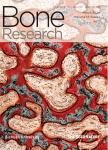Mitigating osteonecrosis of the jaw(ONJ) through preventive dental care and understanding of risk factors
Mitigating osteonecrosis of the jaw(ONJ) through preventive dental care and understanding of risk factors作者机构:National Institute of Dental and Craniofacial ResearchNational Institutes of HealthBethesdaMDUSA Laboratory for Oral Connective Tissue BiologyNational Institute of Arthritis and Musculoskeletal and Skin DiseasesNational Institutes of HealthBethesdaMDUSA
出 版 物:《Bone Research》 (骨研究(英文版))
年 卷 期:2020年第8卷第1期
页 面:14-25页
核心收录:
学科分类:1003[医学-口腔医学] 100302[医学-口腔临床医学] 10[医学]
主 题:drugs metabolism alterations
摘 要:It is well established that alterations in phosphate metabolism have a profound effect on hard and soft tissues of the oral cavity. The present-day clinical form of osteonecrosis of the jaw(ONJ) was preceded by phosphorus necrosis of the jaw, ca. 1860. The subsequent removal of yellow phosphorus from matches in the early 20 th century saw a parallel decline in phossy jaw until the early 2000 s, when similar reports of unusual jaw bone necrosis began to appear in the literature describing jaw necrosis in patients undergoing chemotherapy and concomitant steroid and bisphosphonate treatment. Today, the potential side effect of ONJ associated with medications that block osteoclast activity(antiresorptive) is well known, though the mechanism remains unclear and the management and outcomes are often unsatisfactory. Much of the existing literature has focused on the continuing concerns of appropriate use of bisphosphonates and other antiresorptive medications, the incomplete or underdeveloped research on ONJ, and the use of drugs with anabolic potential for treatment of osteoporosis. While recognizing that ONJ is a rare occurrence and ONJ-associated medications play an important role in fracture risk reduction in osteoporotic patients, evidence to date suggests that health care providers can lower the risk further by dental evaluations and care prior to initiating antiresorptive therapies and by monitoring dental health during and after treatment. This review describes the current clinical management guidelines for ONJ, the critical role of dental-medical management in mitigating risks, and the current understanding of the effects of predominantly osteoclast-modulating drugs on bone homeostasis.



